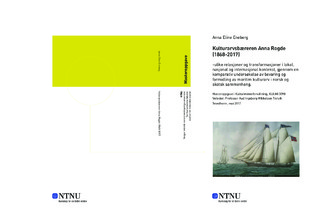| dc.description.abstract | This survey can conclude that the vessel Anna Rogde can be associated with people and places, both in an international, national and a local context. Anna Rogde can also be related to archives, certain ship-designs, craftsmen, industry and trade. When a vessel is recognized as heritage, this survey shows that different sources can help put the vessel into a unity and increase the value and prove that vessels are not isolated objects.
This survey has also pointed at conditions that should be to consideration for an unsafe future for many important ships in both Norway and England, such as Anna Rogde and Swan. In Norway, vessels are excluded from the saving of a maritime cultural landscape, though vessels most commonly would have played an important role in these environments or communities. This survey used Anna Rogde to show that a vessel also can be connected to an environment, to people or places.
Owners of great historical vessels, both private or through a museum, often struggle with funding or to keep the vessel in operation. This survey does not have clear evidence or a solution for solving this problem, but the survey tries to offer certain possibilities. In ownership of a historic vessel, well-calculated plans are a key to help organize the work. If the vessel has a lot of original materials, then it should be considered whether it should be a museum-object to save money, because of all the repeated maintenance-work required to keep it in operation. If it has not a lot of original materials, then function is always a key for a vessels survival. And because vessels in operation depend on funding, this survey suggest to not rely upon a state or other organizations to pay the bill to save the historical vessel. This source of funding should not be considered as a safe way of saving a vessels´ future, because of the changing and cuts from one year to another. The most effective way that this survey suggest, is to be as self-dependent as possible, through using all the creative ideas and projects that can help raise money, whether it`s on land or ashore. This can be done through such as partnership models, but the essential point here is to not neglect the power of planning and possibilities. Risks is a part of investment with historical vessels, and the responsibility that follows this ownership should be considered, and needs planning and documentation. Part of the documentation could be done through an off-ship research or mapping certain aspects of the vessels` values, such as different historical phases, owners, places, connections or VI functions. This may help as a guideline on making the right decisions for why it should be saved for the future. | nb_NO |
